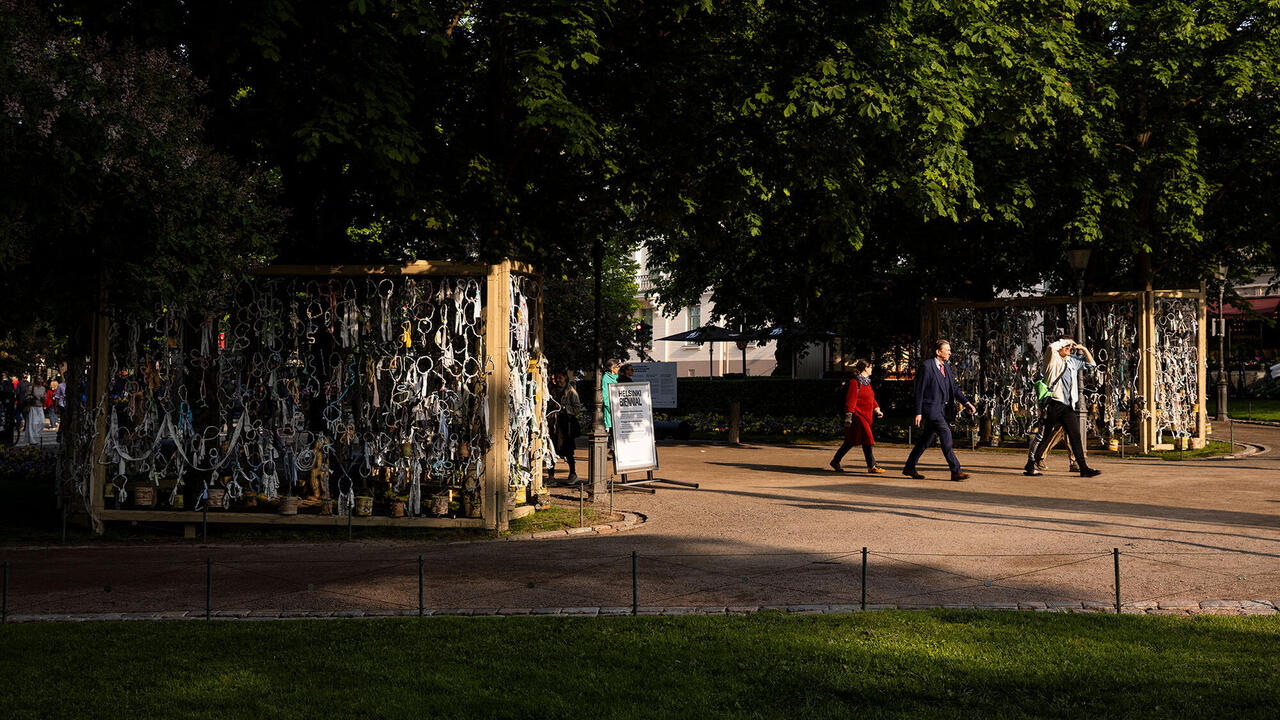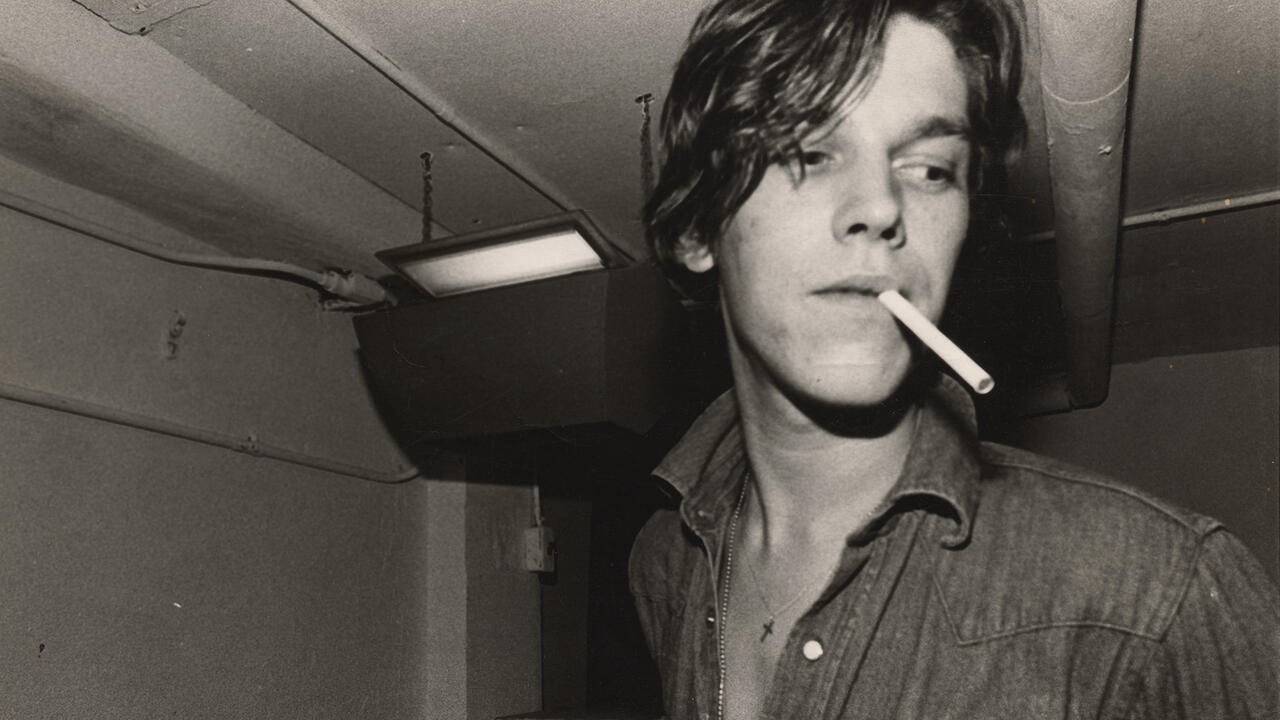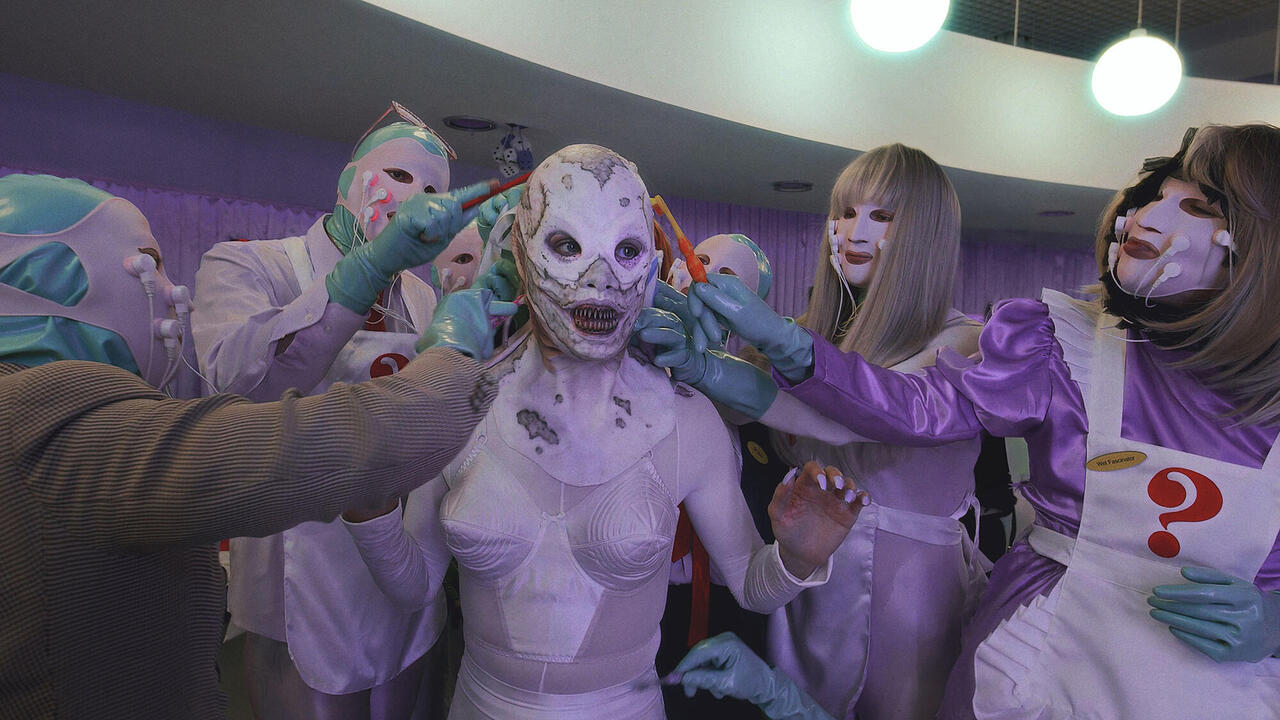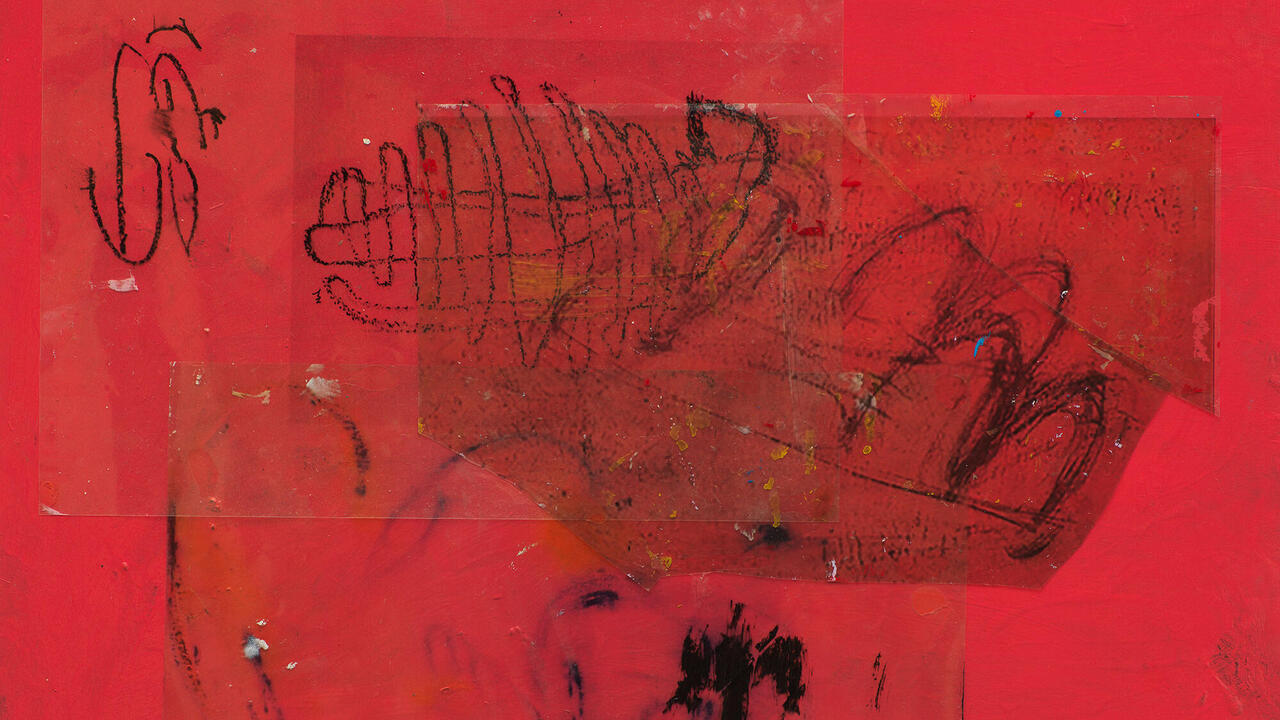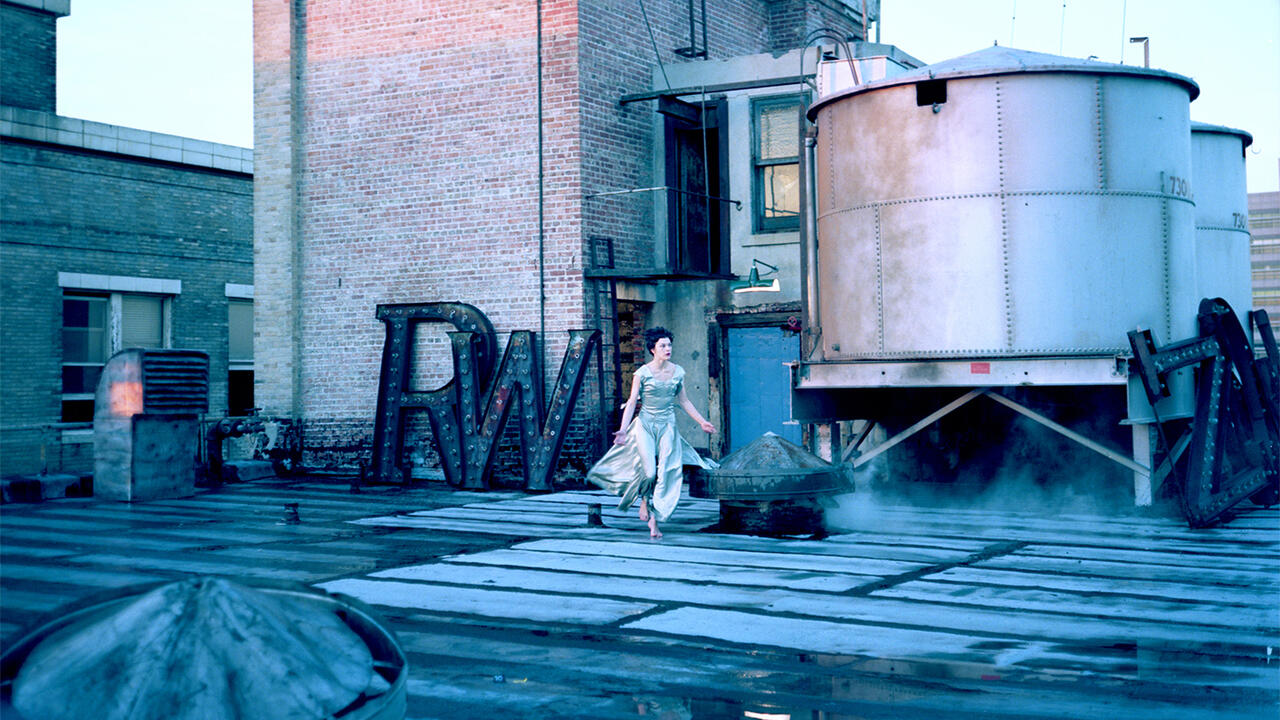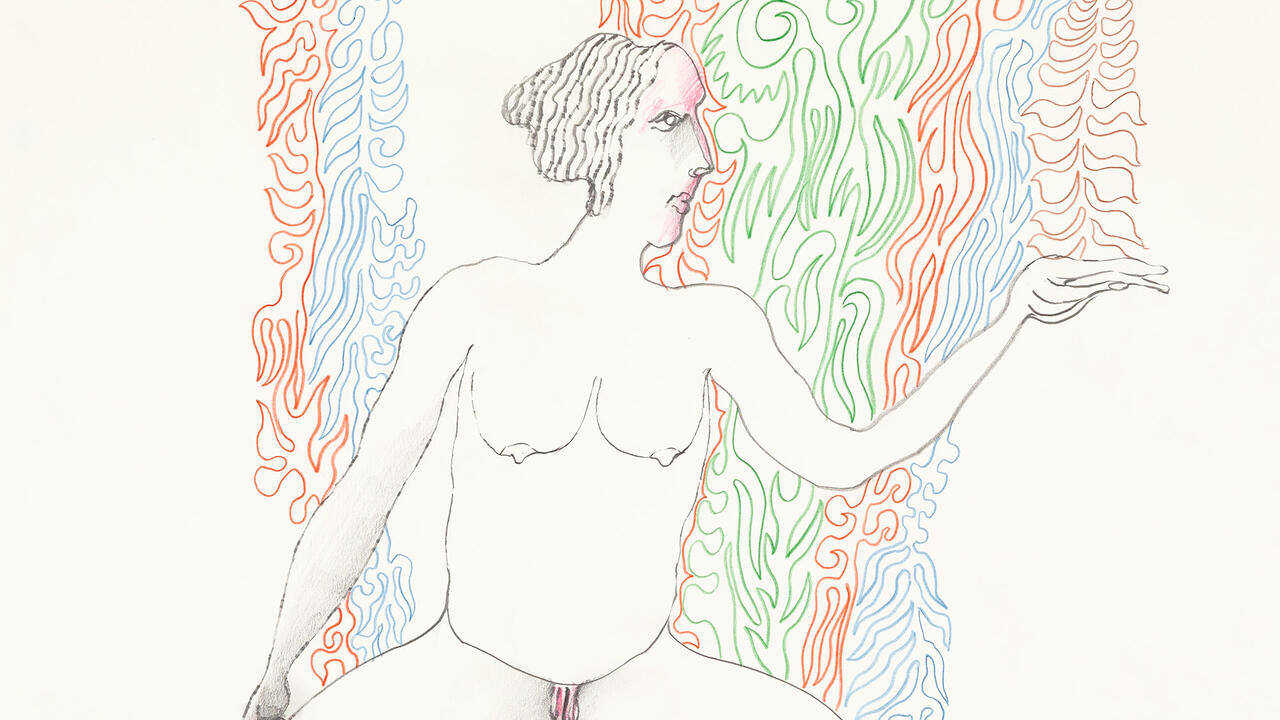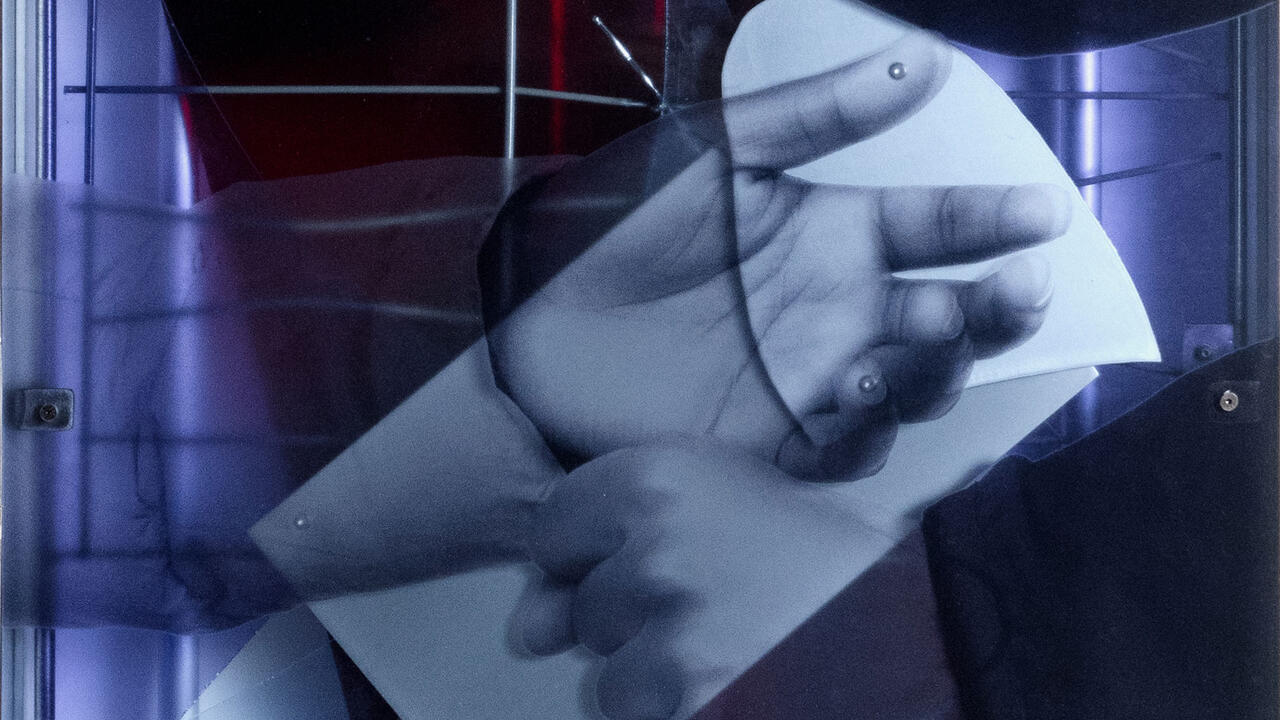Cyprien Gaillard’s Personal Portrait of a Lost Paris
A two-venue homecoming exhibition at Palais de Tokyo and Lafayette Anticipations explores youthful silliness, romanticism and the pitfalls of restoring the past
A two-venue homecoming exhibition at Palais de Tokyo and Lafayette Anticipations explores youthful silliness, romanticism and the pitfalls of restoring the past

On 1 July 2003, time stopped in Paris’s Quartier d’Horloge. Before, an animatronic figure on a clock used to step out from a craggy bluff, three times a day. Then, like a carnival Saint Michael, he’d heroically fight off a mechanical dragon, crab and rooster. Jacques Monestier’s public artwork The Defender of Time (1979) was no match for time, however, or the ravages of city development. The clock was decommissioned after its maintenance budget was axed.
Today, The Defender is splotched with guano and a little ugly. But there’s an undeniable magic to seeing him re-animated for Cyprien Gaillard’s two-venue homecoming exhibition ‘HUMPTY \ DUMPTY’. Weighing in at about a tonne, The Defender hangs like a movie prop in the swish, Rem Koolhaas/OMA-designed Lafayette Anticipations, just a few blocks from the work’s original site: perhaps the last vestige of colourful, working-class life in central Paris.
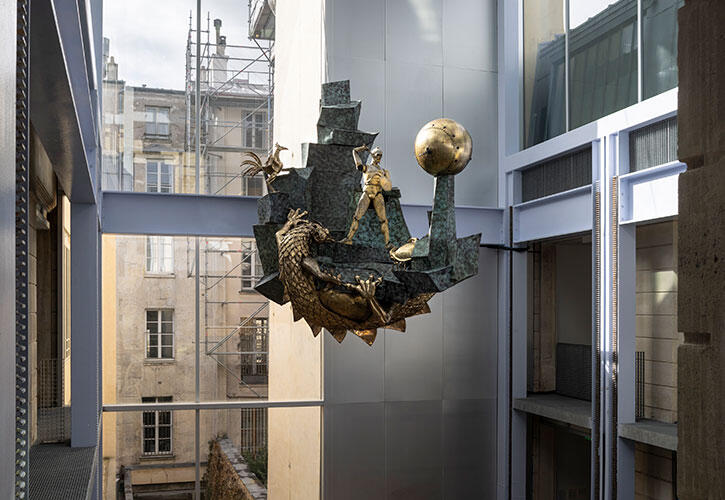
Now, time is different. Gaillard has reconfigured The Defender’s clock to count backwards. When I entered the gallery, the dragon’s bronze stomach was pulsing like a heart on life support. Ethereal instrumental music by Laraaji began to play, the machine started to crank, and I got a little lump in my throat.
The prevailing mood of ‘HUMPTY \ DUMPTY’ is nostalgia – an emotion I’d describe as a consciousness of loss, with a little embarrassment thrown in. Gaillard’s show, a personal portrait of a lost city, is about time – not regained so much as mourned – and about youthful silliness and romanticism. Yet, it’s also about the pitfalls of restoring the past.

In ‘Dumpty’, at Lafayette Anticipations, Gaillard has also installed an homage to a Parisian friend, Gaël Foucher, who died in undisclosed circumstances in 2013. As The Defender rises thunderously, we can look down under a transparent panel on the floor to find a rapid-fire slideshow of images of Foucher (Frise 2, 2022). As if scrolling through phone snapshots, we see him drinking, smiling, hanging out near park fountains; in one photograph (L’Irrestaurable, Pour Gaël, 1979–2022), he’s on the underground in Mexico City: young, handsome, with greasy hair and a t-shirt.
It could all be too much. But, by steering our attention toward a silly public sculpture, Gaillard evokes something true about how absurdity and gravity comingle in experience. Consider how our most memorable moments, as we lived them, seemed not transcendent but banal.

We can view the crowd-pleasing installation at different angles, from the venue’s three, modular floors. It’s worth lingering for the way the lovely, changing music shifts the tenor of the piece. A new composition by Gaillard and Williams, ‘Hit’ (2022), samples tracks from 2003. It’s Gaillard at his romantic best. He’s one of few artists today who can re-activate the creaky tradition of public art.
Maybe you believe, as I do, that all art already is public, that even art in private hands is for everyone. Yet, Paris in 2022 has a lease on something else. Previous building developers razed working-class areas for offices and retail interests. Today, the city is in full, restorative mode, capitalizing on its own past, as simulacrum, for tourists and shell investment. A slew of new private museums and foundations – many of which, it could be argued, serve as tax write-offs for the world’s robber barons – begs for a distinction to be drawn between art for the public and art as a storehouse for value.

All the more remarkable, then, that Lafayette Anticipations – a foundation owned by the department-store chain Galeries Lafayette, which, incidentally, grants free entry – has, under its new director Rebecca Lamarche-Vadel, pulled off this expert job at self-critique. It has confidently situated itself in its neighbourhood. In the new Paris, a certain idea of Frenchness is marketed outwardly by President Emmanuel Macron. The show imbricates itself in the history it criticizes. It is cerebral and transparent while remaining emotionally arresting. ‘Dumpty’ is one of the best exhibitions I’ve seen all year.
Richard Rogers, co-architect (with Renzo Piano) of the Centre Pompidou, was often asked about the area of Paris in which the building now stands. (The Defender of Time was indelibly linked in public memory to the nearby monolith still called Beaubourg by locals.) The Pompidou was widely hated when it opened. It was disliked for its radical, inside-out architecture. But also because its construction required bulldozing the homes of people who lived in one of central Paris’s last mass residential areas. When I saw Rogers speak at Frieze’s Art + Architecture conference in 2018, he waved away those concerns with a smile. What Paris gained in a trademark art space it also lost in housing. At what cost? Who would know that Beaubourg-Marais was, not so long ago, a slum? Do legacy art projects justify their role in making cities unaffordable?

Today, cities, like museums, risk becoming little more than sites to park capital. Retail vanishes, making way for meal-delivery cyclists and bankers gliding by on e-scooters. Art institutions become excuses for revanchist, national branding. ‘Paris changes!’ Baudelaire wrote in Le Cygne, his 1861 poem about Georges-Eugène Haussmann’s renovations of the capital. ‘But my melancholy hasn’t budged an inch,’ Gaillard might answer, as Baudelaire did.
Across town, in ‘Humpty’ at Palais de Tokyo, Gaillard takes on the rusty build-up of infrastructure, in the manner of his hero Robert Smithson (to whom a room here is devoted). Gaillard adds a childlike drollness to Smithson’s grandiloquence. Not quite a retrospective, ‘Humpty’ is something like a ‘best-of’ the artist’s videos, sculptures and photographs. Videos such as Ocean II Ocean (2019) hold up. But I missed Gaillard’s bold, semi-public actions like The Recovery of Discovery (2011), an interactive installation composed of a pyramid of full beer crates. Gaillard makes a temporary social setting in which the underside of the party – destruction, mess, refuse – is rendered visible. It also shows the reason people go to art spaces: to hang out. Where else to go, when public space is all but lost?

Gaillard’s popular sensibility owes something to punk, but also to street culture. This brings me back to Foucher, of whom we are told little. With his hipster attire, I picture him as, probably, a graffiti artist, a skater, a man of the people, like a less-edgy Dash Snow. A white male, a Parisian, in a show lamenting the loss of their city. While I do feel empathy for this, because I have known my own Fouchers, I wonder: how many others might not? What forms of privilege are latent here? A story about a changing Paris is surely more relatable than one about Reims or Calais or Grigny, France’s poorest district.
If I’m sounding harsh, it’s partly because one of the measures of public art is how it bears the wear-and-tear of assessment. Gaillard’s art can take it. But parts of ‘Humpty’ made me scratch my head. It was disappointing to find vapid wall panels like Overburden (2020), or a great many shiny, framed double-exposure prints and Polaroids that practically seem wrapped like madeleines for duty-free sale. It’s doubly dispiriting in a show about a city selling out, when a new art fair has moved in next door. Call me nonplussed.

Gaillard is best in big emotions and simple strokes: for example, bags filled with confiscated lovers’ locks from Paris bridges (Love Locks, 2022). Instantly relatable, the work tells a story about youthful hope and its loss. The Lake Arches (2007) looks like a clip from Jackass (2000–01), another cultural touchstone of the early 2000s. Two men in bathing suits jump into what seems like a lake. But one of them emerges, having busted his face open. He had a fall. The lake was not very deep after all. It was not a great fall, but it hurt.
Cyprien Gaillard’s ‘HUMPTY \ DUMPTY’ is at Lafayette Anticipations and Palais de Tokyo, Paris, until January 8, 2023.











